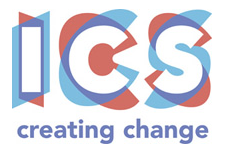Implementing institution: Investing in Children and their Societies (ICS)
Country: Kenya
Source: IPA
Execution period: 1996 - 2000
Plataforma de Prácticas Efectivas:

Reduce elementary school dropout and increase school performance on national tests.
A bonus system for teachers based on the average results of students in the school.
An increase of 0.14 SD from average results by the second year of program implementation. In addition, in the first program year, participation in examinations increased by 6 percent, while in the second year it increased by 7 percent.
The Teacher Incentives Based on Students’ Test Scores in Kenya program is developed by the NGO ICS Africa and focuses on providing vouchers to teachers to encourage their students’ participation and performance in national examinations. The measures mainly target elementary school students in vulnerable rural areas. To reach them, the Ministry of Education has selected schools with a certain degree of need in the Busia and Teso districts. The bonuses are attributed according to the results of the students in the national tests.
A penalty system is applied proportionately to the number of students who fail the test. The bonuses are given in kind, rather than cash, as it is considered more culturally acceptable in Kenya. The first prize includes 3 suits with a nominal value of US$51; the second consists of a set of plates, glasses and silverware worth US$43, while the third prize is a tea set worth US$34.
These figures represent between 21% and 43% of a teacher’s monthly salary. Each school can win a single prize that is redistributed among teachers internally. All teachers who taught grades four through eight in the participating schools were eligible for the program. To keep them from competing with each other, bonuses are awarded on the basis of average school results rather than by class. In order to prevent teachers from moving the second year to higher-performing schools, their position is only considered at the beginning of the program. Also, to discourage schools from discriminating against students, only students enrolled at the beginning of the program are considered.
Like many countries in the sub-Saharan region, Kenya is characterized by a young, rural population, with children under 14 accounting for 40% of the total population (range 15-24, 20%); 74% of all inhabitants live in rural areas. These areas are home to high levels of vulnerability, low productivity and shortages of basic services such as health and education. In education, although the country has managed to increase the net participation of children and young people at the elementary and secondary levels, by 2012, there were one million children who did not attend the formal education system. This number dropped considerably between 2006 and 2007 (minus 44%), but returned almost to its initial levels the following year, to remain more or less stable until now. The above trends reveal a complex educational context in Kenya, which tends to worsen along with the decline, since 2006, in the proportion of public expenditure on education in relation to GDP (from 7 to 5% at present).
An evaluation conducted by IPA between 1998 and 2000 sought to rescue the program’s impacts on test participation rates and student performance. To this end, 50 of the 100 participating schools were randomly selected to receive the program while the remaining schools were not. Comparative analysis of the results has shown an increase of 0.14 SD of the average test results by the second year of program implementation. Participation in examinations increased by 6% in the first year of implementation and by 7% in the second year. However, there is no significant impact from the intervention on the behaviour of teachers in classes (presence, attitudes, etc.).
Impact of interventions:

Charts: Impact measured in standard deviations of the intervention group compared to the control group
Link: https://www.poverty-action.org/study/teacher-incentives-based-students-test-scores-kenya
Report: Ver informe
Other documents:
Tags: